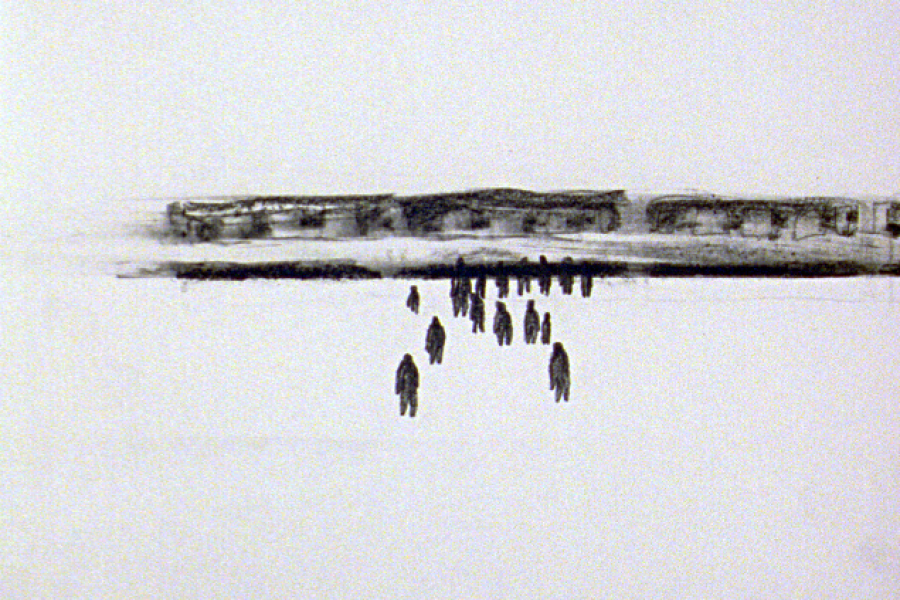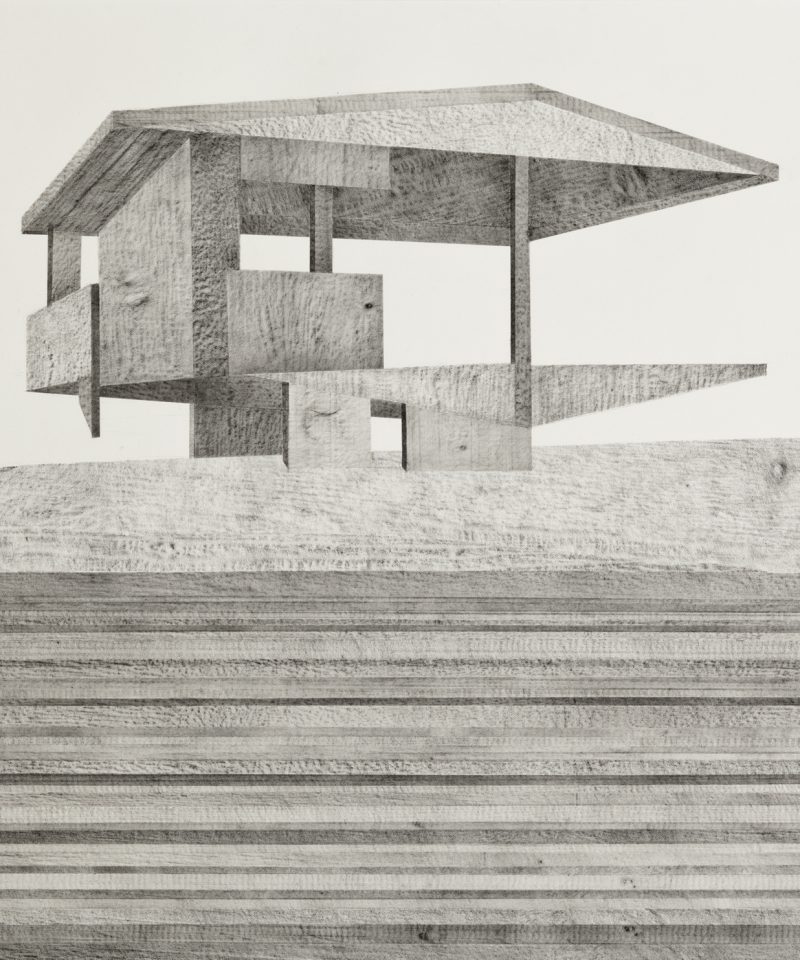Jane Dixon was highly commended in this year’s Drawing Prize. An artist with an almost forensic attention to drawing, she painstakingly builds up her images over a long period of time. Here she talks about her inspirations from Modernist Architecture to Surrealism.
You go through quite a complex process to make your drawings.
With all my work there is a strong alignment between subject and method, it’s a conceptual marriage in which the materials and the construction are as much a part of the meaning of the work as is the image. The complexity of the making is something inherent to the work, rather than an arbitrarily difficult process.
What was the inspiration behind Model Series?
I’ve always found 3D models interesting: that they can be scaled up or down versions of something that already exists and we are making them to explain or inform, such as the natural history models where a microscopic insect, for example, is scaled up to the size of a guinea pig and in immaculate detail. I think they have a touch of Gregor Samsa about them…a surreal metamorphosis. Also there are models made as pure replicas, a 1:1 scale model of a real thing.
I find Architect’s models very beautiful, particularly the simple wooden ones where everything is pared down to the structure rather than thinking about local colour or material changes. I think that’s something I’ve often sought to do in my work: to edit objects or spaces down to the minimum information – it’s like trying to distil something.
Can we talk about the texture of the pictures?
The texture is illusory, the paper remains very smooth whilst the marks and tonal variation implies depth or something in relief. I think the ambiguity of apparent texture traced from a substance with real texture (wood, earth etc.) is the appeal for me.
Rubbing (frottage) is a technique that I’ve adapted in previous series, particularly in Regeneration (2006 – 2010) where the drawings were made from layers of rubbings taken from the surfaces of both real buildings and painted images. In the case of the architectural model drawings I constructed the whole image by taking rubbings from numerous pieces of wood. The tone builds up to create a very three dimensional illusion whilst the discrepancy in scale of the grain in the wood plays on the ambiguity of this thing existing or not as an object.
The ‘boxed earth’ drawings in Model Series refer to the natural history specimens that I’ve seen, the 1:1 replicas made from cast resin. For these drawings I made rubbings from actual soil samples to create a direct trace of the real thing whilst the foliage or turf is entirely invented and drawn.
Are your drawings taken from real places or are they imagined?
A combination of both. The architectural models I used are not mine, they are found and quite deliberately I don’t take details of what they are, I photograph them and then use them as a basis for adaptation and transformation into something else. The original models may or may not have been of an existing place, in many ways it’s important to me not to know. It is the idea of representation and transformation that matters: whether that is a building for the future or something from the past, part real or part invention, it’s an ambiguity I’m happy to foster.
The earth drawings look like specimens from a geology expedition, or perhaps samples taken from the moon.
I agree that the boxed earth drawings have very much a sense of almost forensic detail. The idea of rubbing, of revealing an object or surface slowly by painstaking process is something I adapted as a reference to archaeological methodology whilst making the Regeneration work. For the Model Series it was re developed as a means of making direct traces of the real materials: a 2D representation of a 3D substance.
They also look like the tampered remains of a forensic investigation, something I find quite disturbing.
I guess I hadn’t thought of them in that way, not in a literal sense anyway. A lot of my work deals with loss and impermanence, a sense of fragility. The drawings are metaphorical.
What is your favourite style of architecture?
I think Modernist architecture has the biggest appeal for me, especially to live in.
Where would you like your pictures to be exhibited?
The Guggenheim Museum, NYC, a wonderful building.
What is your favourite drawing material?
Graphite, without a doubt. I love its properties – the sharpness of a lead pencil point but with a smoothness that can seem almost liquid. The greys that seem almost silver, a tonal subtlety and luminescence that can equate for me with black and white film and X-rays.



